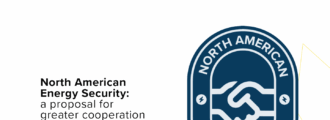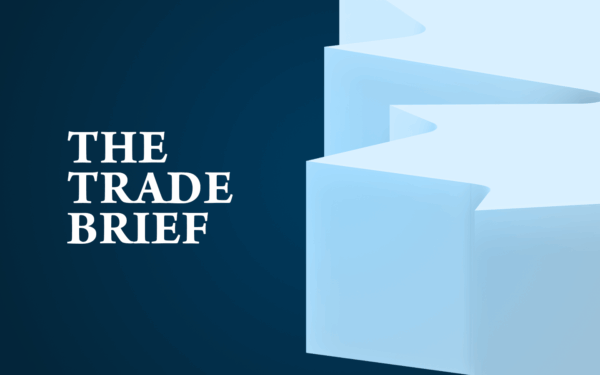Want to remain strong and free, Canada? Six steps to becoming an energy and resource superpower
As published by The Hub
With the January 20th inauguration of Donald Trump now upon us, the world is returning to an era of realpolitik. Canada is faced with a highly turbulent geopolitical context where, to paraphrase Lord Palmerston, there are no permanent friends or enemies, only permanent interests.
Canada’s interests are not defended by being good at convening. They are advanced with the soft and hard power that comes from having an abundance of the energy, food, and resources that your friends and enemies need.
It is right and good for Canada to leverage its abundant resources to advance our interests because our interests are benign. We want our citizens and our allies to be prosperous and secure. Inasmuch as we have the ability to accomplish that, it would be a dereliction not to.
Canada will have an election sooner rather than later, and the likely winners, Pierre Poilievre’s Conservatives, have indicated they have every intention of making Canada a resource superpower. Here are some suggestions to achieve their goal.
1. Build more pipelines
Canada has the world’s third-largest oil reserves and an almost unlimited supply of natural gas. Most of this is concentrated in the prolific Western Canada Sedimentary Basin. Getting more product to tidewater, where it can access the highest bidder in global markets, would not only provide good jobs, government revenues, and foreign exchange earnings; it would provide Canada with more soft power on the world stage and reduce our economic dependence on the U.S.
Building new export pipelines in Canada will be a complicated business no matter which government is in power, so best to stick with the projects where the initial legwork has largely been completed: Prince Rupert Gas Transmission and Northern Gateway. Get these built by 2030. Filling up Trans Mountain and Coastal Gas Link, and optimizing the Enbridge Mainline system, will give us room until then.
2. Reform the Impact Assessment Act
The “No More Pipelines” bill turned out to be the “No More Anything” bill; since the IAA was passed in 2019, only one project, Cedar LNG, has been approved under its auspices. Not only has it stymied investment in electricity generation, pipeline infrastructure, and the development of mines, it’s also caused deep rifts with the provinces because, as affirmed by the Supreme Court of Canada, it is unconstitutional.
Going back and forth with competing environmental legislation every four or eight years won’t win Canada back more investors. What’s required by the next federal government to improve the investment landscape and get things built is simply to abide by the Constitution and stay in its jurisdictional lane. In practice, this means projects should have just one assessment and one decision maker, according to the separation of powers determined by the Constitution.
Provinces should conduct environmental assessments for mines, oilsands projects, refineries, power generating facilities, and intra-provincial pipelines. Inter-provincial and international pipelines and transmission lines should be assessed by the Canadian Energy Regulator. Nuclear projects should be assessed by the Canadian Nuclear Security Commission (CNSC). Railroads, marine terminals, offshore, and other projects on federal lands that meet certain thresholds should be assessed by the Impact Assessment Agency of Canada.
Separate from project approvals, the federal government will still be responsible for issuing permits to control and mitigate effects within their jurisdiction, such as on fish and migratory birds; it should become more efficient in doing so.
All of those agencies, provincial and federal alike, should focus on being more transparent and responsive, and excel in their duty to consult and accommodate Indigenous rightsholders. World-class regulatory agencies protect us from risk, not progress.
3. Go Nuclear
Canada has the world’s richest uranium reserves. Saskatchewan’s Athabasca basin already provides 20 percent of the world’s uranium supply, and several expansions and new mines are slated for the region. Nunavut has a sister basin, the Thelon, with similarly high grades which have not yet been tapped.
These resources will be essential for the burgeoning nuclear renaissance, driven by demand for energy security, clean baseload electricity, and the ravenous needs of AI and data centres. Thirty-one countries have endorsed a declaration to triple nuclear energy capacity by 2050.
The next government should support the expansion of uranium mining, for example by ensuring timely regulatory processes via CNSC.
But beyond exporting Saskatchewan uranium, Canada can be a nuclear energy powerhouse across the value chain.
Ontario already exports nuclear services, equipment, and technologies for CANDU reactors. It is now expanding to small modular reactors, which OPG is leading the Western world in developing at its Darlington site. Eastern Europe is the best near-term market for nuclear co-operation, but eventually we should expand beyond even there.
The next logical step is for Canada to plan to enrich uranium, for domestic and export purposes. As the Western world seeks to build up nuclear capacity, Canada is the most obvious candidate to become a new supplier of enrichment services—currently a very small club. Cameco, the Saskatchewan-based uranium miner, already refines and converts uranium, and fabricates nuclear fuel bundles for CANDU reactors. But these use natural, not enriched, uranium in their plants. The BWRX-300s being constructed by OPG will require enriched uranium, as will any future micro and small reactors used in Canadian remote communities and for industrial applications.
Enrichment in Canada would support global diversity of supply in a way that would preserve non-proliferation efforts, while also ensuring our own domestic energy supplies. Cameco is already developing next-generation, laser-based technology for commercial application in enriching uranium.
Building enrichment capacity within Canada would require diplomacy with the Nuclear Suppliers Group and coordination with the International Atomic Energy Agency. Canada likely won’t begin enriching uranium within the next government’s term, but it should secure the endorsement of our allies and fulfill the legislative and international requirements to do so in that time.
4. Earn Indigenous consent
The Canadian Constitution recognizes and affirms Aboriginal and treaty rights. These types of rights are almost always impacted by resource development and thus impose a duty on the Crown to consult and accommodate affected Indigenous rightsholders when evaluating and approving such projects.
To proceed at pace with resource development—to obtain a social license for projects and avoid costly legal challenges and delays—it is in everyone’s interest to earn Indigenous consent for projects before they go ahead. Most Indigenous communities are not opposed to resource development; they are opposed to being left out of the economic benefits that such projects bring, or excluded from the planning to ensure their environmental and cultural impacts are reasonably mitigated. Rightly so.
In the past two decades, the energy, mining, and forestry sectors have gotten pretty good at developing strategies with Indigenous rightsholders to ensure fair benefits from projects. These include procurement, employment, payments, co-management, and equity stakes.
To continue down this path and enjoy additional industry-Indigenous alignment, the next government should, first, fast-track the implementation of the Canada Indigenous Loan Guarantee Program, which was recently initiated following much prodding of the Liberals but is based on a similar successful program in Alberta, and keep it well capitalized; and second, employ additional tools, including those that can incent industry-Indigenous partnership in the upstream activities of mining and oil & gas extraction, where Indigenous rights are most impacted.
These could look like the nascent First Nations Resource Charge announced by Poilievre in February 2024, that would cede federal tax room otherwise be paid by proponents to Indigenous communities. Indigenous-specific royalty trusts, royalty credits, and investment tax credits should also be explored. More tools that can support more kinds of resource projects and partnerships would be welcome and stimulative.
A targeted effort to build the capacity of Indigenous communities to assess the merit of resource projects on their territory, and negotiate their participation in them, would also reduce bottlenecks.
5. Incent critical minerals production through defence spending
China is actively manipulating critical minerals markets. This undermines projects in Western democracies by either starving them of the capital needed to develop in the first place or forcing them to shut in existing production.
Because it is intolerable to be dependent on China (and in some cases Russia) for the materials—raw and processed minerals and components—necessary for our economy to function, there is an urgent national security case to support some minimum level of domestic or allied capability.
In particular, materials needed in our defence supply chains should be supported through defence spending. The U.S. already does this through its Defense Production Act (DPA), and indeed has invested, in collaboration with Natural Resources Canada, on six critical minerals projects in Canada in the past year. We should do the same, independently of DPA funding, by ramping up the amount we spend on military equipment inputs most vulnerable to restrictions by our adversaries, including germanium, gallium, indium, graphite, tungsten, arsenic, scandium, and other rare earths.
Because Canada has access to significant quantities of these commodities (and in many cases existing capacity to process them) and many of our NATO allies do not, there is a special responsibility to do so at pace. Supporting the mining sector to innovate new ways to process these materials economically, and with less safety and environmental impacts than current competitors, will be the icing on the cake.
The next government should work with Canadian mining companies and defence contractors to determine what combination of stockpiling, strategic reserves, feed-in tariffs, contracts for difference, or other vehicles is optimal to secure access for which materials are needed for the defence supply chain. Such an initiative would have the added bonus of helping Canada reach its NATO spending commitments faster, given the long timeframes inherent in acquiring the defence systems otherwise planned.
6. Address labour disruptions for port and railroad services
Nobody wants to limit labour rights or restrict the ability of unions to negotiate fair deals. But the spate of railroad and port strikes in Canada in recent years has gone too far, creating broad-based economic harm and tarnishing the country’s reputation as a reliable trading partner.
Canadian workers and businesses that depend on exporting their goods cannot keep being held hostage like this—not if we want to step up and be the preferred supplier of energy, resources, and food to our allies. Supply chain disruptions have reached crisis levels and the current situation is incompatible with the national interest.
The next government should have public support at the ready to make structural changes. At a minimum, the next government could amend the Canada Labour Code to enable them to impose binding arbitration before a work stoppage occurs.
As Russell Conwell exhorted in the early 20th century in his famous Acres of Diamonds speech, “Get rich, young man, for money is power, and power ought to be in the hands of good people. I say you have no right to be poor.”
I say Canada has no right not to develop its energy, minerals, and agricultural goods to the best of its abilities; not only to improve Canadian’s quality of life but to ensure that reliable and ethically produced alternatives of these essential items exist to any nation in the world that needs them.










